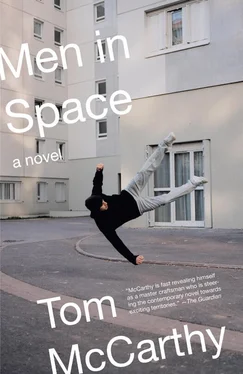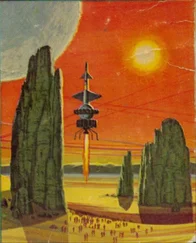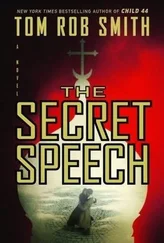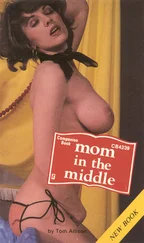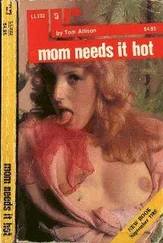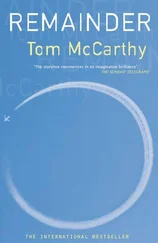Passing through the floors above my own en route to the meeting, I was able to observe the extent to which the entire organization of the Central Criminal Police is being reconfigured. I saw stacked-up files from Organized Crime being transferred onto Criminal Intelligence shelves, Photo-Fit Department boxes merged with Modus Operandi ones, Fingerprinting slides inserted into Scene of Crime Department records. In one corridor I saw rows of cabinets containing pre-lustration STB files waiting to be accommodated somewhere within the new structure. The Slovak section was being disbanded; a whole storey had been designated as a dumping ground for files relating to that portion of our country soon to become independent Slovakia; yet records from the Slovak regions of Košice and Bratislava were still coming in by fax, telex and computer, to be filed, copied and indexed. New sections were being created to liaise with Western European institutions such as TREVI, Europol and the PJCC. The thin plywood partitions separating various offices were being torn down and repositioned. This is the price of realignment: old attachments must be severed, new ones formed. Everything must have its place.
Upon arrival at the office of the NCB, I was led into a room in which I found my colleagues Rosický, from the Financial Intelligence Department, and Novotný, from the Photo-Fit Department, seated. A few moments later, Lieutenant Forman entered with an officer from Interpol to whom, showing great deference, he introduced the three of us. This officer explained to us that we had been assembled here because the activities in which each of us was currently engaged pertained, or might pertain, to a stolen artwork which Interpol were particularly eager to recover. The artwork in question, he informed us, had recently been stolen from a museum in Bulgaria. He passed round a copy of it, taken, as the Cyrillic small print at the base of the page made clear, from a Bulgarian catalogue or textbook. It depicted a male figure floating above a landscape. Below him were mountains, below these houses and, to the right of these, a large blue area across which square objects were being shunted or shuffled into position by small men. The men were either repositioning these objects or else tending to them, as though they were fine-tuning listening devices. None of them looked up towards the main figure, who floated above them in a sky of silver. He wore a red robe on his body, and around his head had a large halo of bright gold. To the right of his feet, above the small men’s square objects, was a line of text written in an archaic form of Cyrillic — or so I assumed, as, being vaguely familiar with modern Bulgarian Cyrillic, I would have been able to read the words had they been written in this script.
The officer from Interpol informed us that this painting had been stolen recently, and that it was highly probable that it was headed west — and, moreover, highly possible that it would pass through Prague. He had called Novotný, Rosický and myself into the office because we were engaged in monitoring known Bulgarian criminals such as Subject and Associates. He urged us to increase our scrutiny of these criminals and their networks over the following days and weeks, and informed us that resources would be made available for us to do so with immediate effect.
While I considered which new surveillance equipment to install in view of this directive, where to install it, and how many auxiliary people I would need to co-opt to work with me to do so, I continued examining the reproduction of the painting. Although, being old, it was certainly not intended to represent such things, what its action (if one can apply that term to such a static scene) most suggested to my mind was the transmission and reception of signals. The blocks to which the small men tended took on the character, even more strongly than they had on my first viewing of the image, of transmitters; the rough silver of the sky suggested a transmission medium, the bright gold around the floating figure’s head a zone of reception; the text, perhaps, depicted the transmissions’ content — content which was, as so often in our field of work, encrypted. The mountains were dotted with angular objects which protruded from them: these, to my mind, suggested aerials or antennae. This made sense: hills, mountains, outcroppings of rock and other such bodies adversely affect a signal, causing multi-path interference. Aerials, such as depicted (so it seemed to me) by the angular objects, would help rectify this problem, aiding the passage of messages from the boxes set in the blue surface upwards to the floating figure, or perhaps vice versa, in the contrary direction. I am aware that my interpretation was highly subjective, and doubtless coloured by the surveillance considerations I was simultaneously entertaining, but this is how the painting presented itself to my mind, and I trust I am not misguided in deeming this fact worthy of inclusion in these notes.
My deliberations were interrupted by Novotný, who asked the officer from Interpol why this particular artwork was considered of such importance as to have three departments of the Prague Central Criminal Police assigned to its recovery. There were, after all, he argued, valuable artworks passing through Prague every week of the year; his office, he continued, was full of files on these, or at least had been until recently, when the bulk of his files had been moved to another office which he had not yet been allowed to occupy. The officer from Interpol replied that it was beyond Novotný’s, Rosický’s or my remit to be informed of the reason, or reasons, for the value placed on the painting, just as it was beyond our remit to know the nature of the bodies for whom it held such value. Some information is to be shared with the likes of us, some not: we can only expect to be told so much. The meeting ended at 11:07 [eleven zero seven], after which …
* * * * *
The presence of the subterranean practice room on Ječná is announced by these words, scrawled in chalk on the building’s outside wall: Roger! This is the practice room . Below them, an arrow points down uneven stone steps. Lying at the bottom of the staircase, moulding and rotting, the strings, plate and soundboard of a disembowelled piano hint at the musical enterprise to which the basement has been consecrated. The practice room itself is shaped like a wine cellar: a stone ceiling that curves down into walls which are offset with alcoves that house instruments, leads, amplifiers, wah-wahs …
Right now, these very objects should be stacked up in the middle of the room ready for carrying up the staircase, but somehow it’s just not happening. Roger Baltham has set up a small projector which is throwing images up onto the flat section of wall that’s furthest from the door, behind the drum kit. The drum kit is intercepting the bottom of the images before they reach the wall, but this isn’t a problem as the effect of these images distorting around curved metal and taut hide seems to please the assembled company, who purr and chuckle as they watch. A joint is being passed round. The Velvet Underground’s ‘Stephanie Says’ is playing on Radio Jedná. Roger’s standing behind the projector, the index finger of his left hand laced round the thin strip of celluloid so as better to facilitate its passage from the projector’s lower spools into the upper mechanism’s slit. From time to time, his right hand takes the joint, feeds it up to his lips and passes it on while he exhales the smoke into the cylinder of light in front of him, watching it uncoil and disappear …
The images show the moon landing — the first one, 1969. Or rather, they show a television screen on which the landing is being shown. Roger found the film among old boxes full of cast-off clothes in the attic of his parents’ house in Palo Alto. He plays a cameo role in it himself, crawling nappy-clad towards the screen and touching it before being whisked away by adult arms. At this precise moment Armstrong, or perhaps Aldrin, is bouncing on the surface of the moon, and Roger’s older sister Laura is copying him on the surface of the coffee table, oblivious to the hands that appear from the edge of the shot to wave her aside. The company assembled in the practice room all laugh. Armstrong or Aldrin bounces again. The camera swings round to show a hair-bunned aunt performing Monroe pouts at it, then zooms in on her breasts. The assembled company laugh some more: they’re in a laughing mood.
Читать дальше
